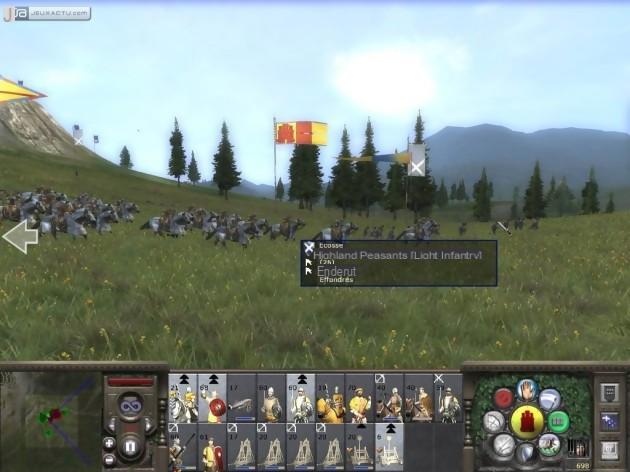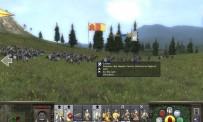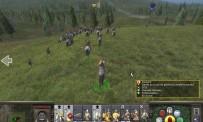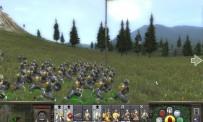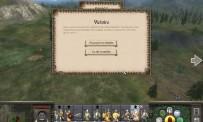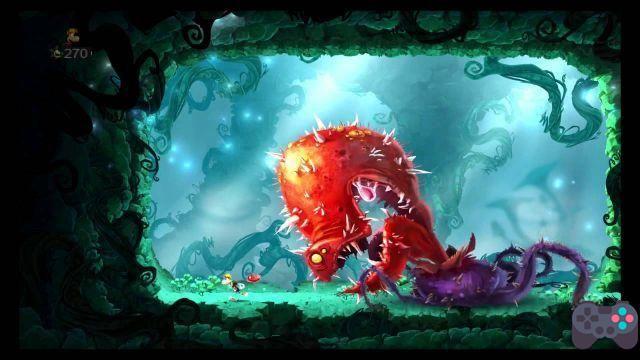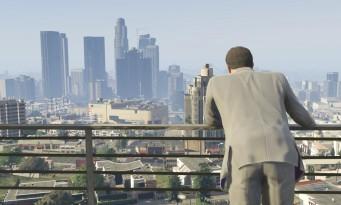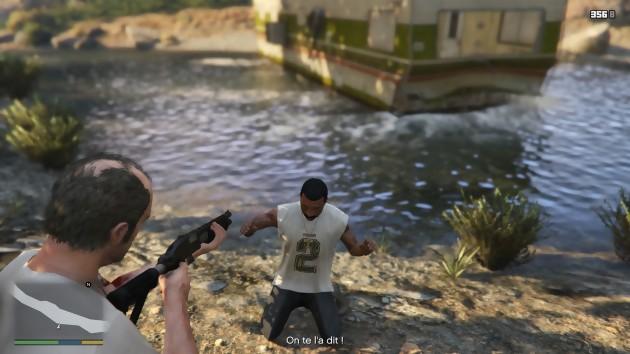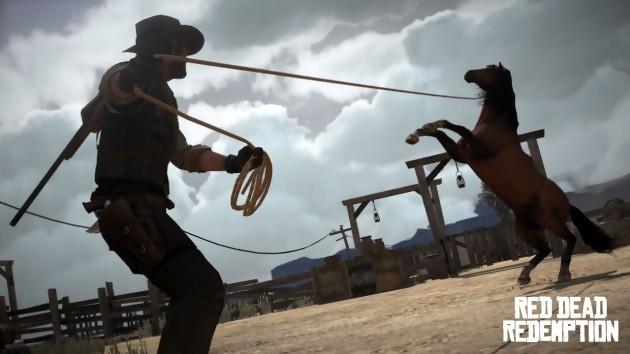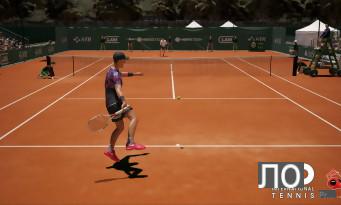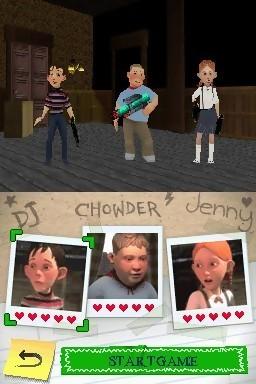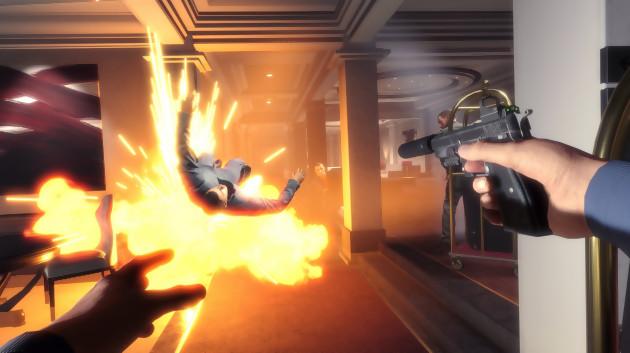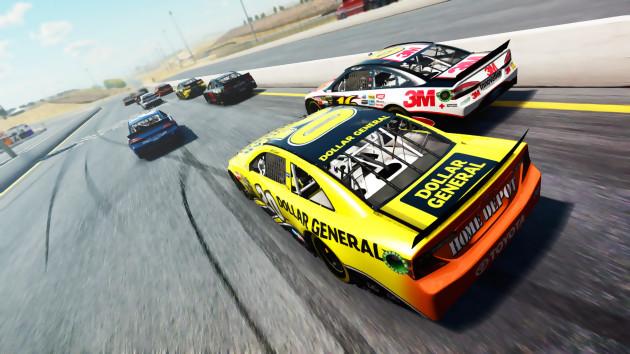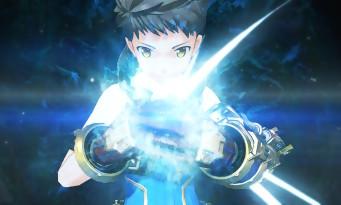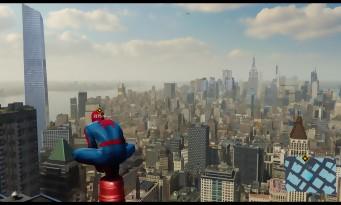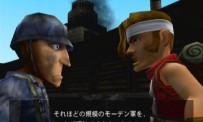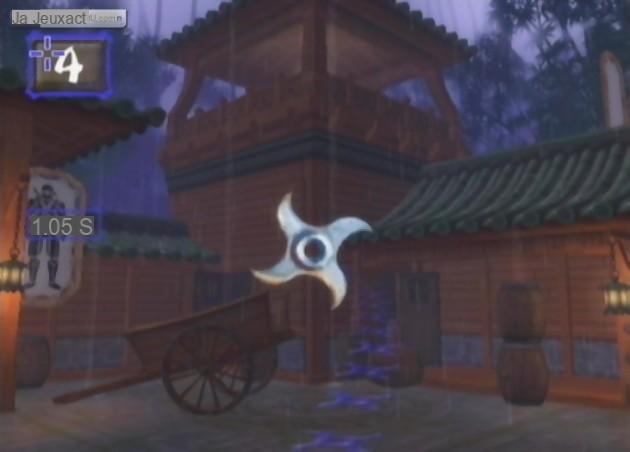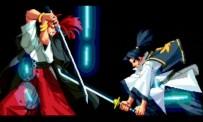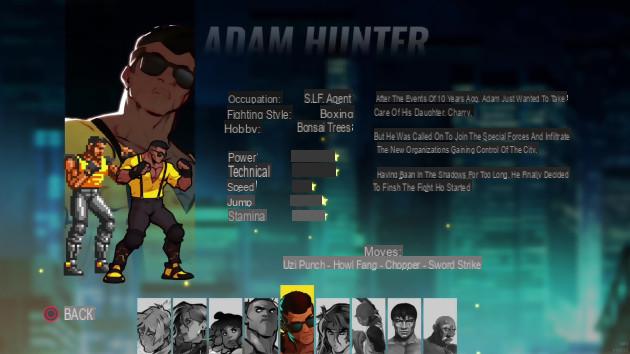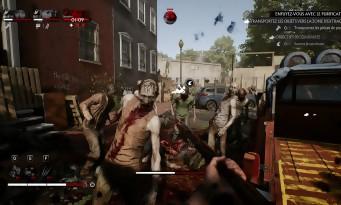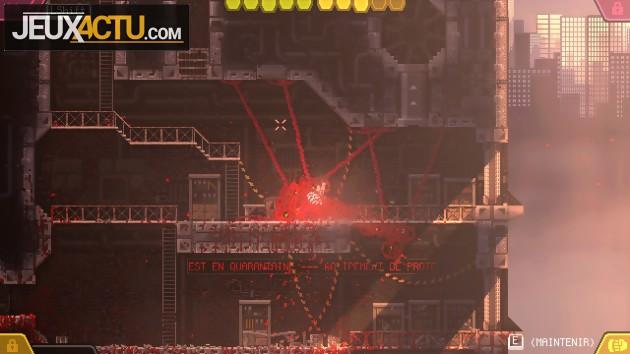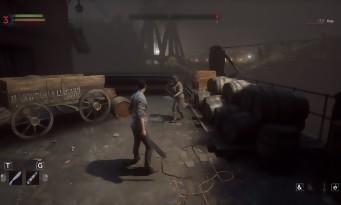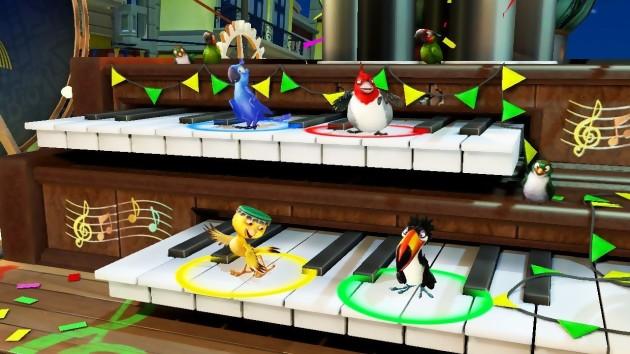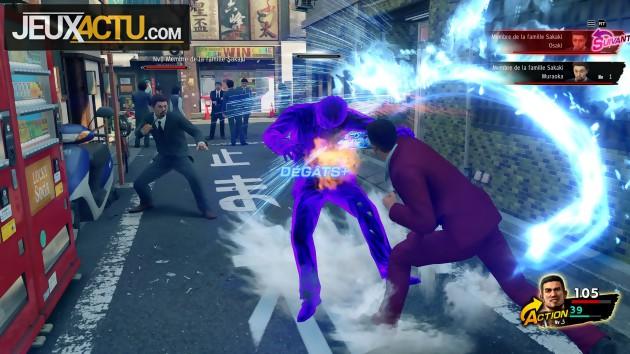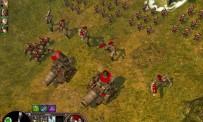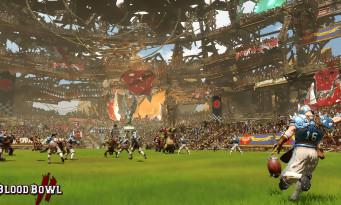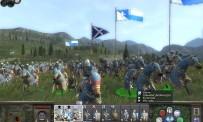 Today, strategy game enthusiasts are divided into two camps. Those who play by reflex, the real nags who know to the second the building or structure to build during the first ten minutes of play (their favorite games are almost all found in the Command & Conquer series) and those who play by reflection. The latter experienced a mystical revelation when Medieval: Total War was released. In a more refined genre, he quickly became the top of micro management where the wisdom of decisions competes in finesse with the relevance of anticipating the enemy. These players, oh so demanding, finally saw their dream come true. Just think: a game rich with 1 tactics of the most varied and very impressive graphically. Only one problem. All Creative Assembly games follow and resemble each other. After all, why not check out the series now. Anyway, those who have already played titles stamped Total War will rush on this title. No need to preach to the convinced. The others, those who missed out on something in previous years must absolutely discover the reasons for this craze.
Today, strategy game enthusiasts are divided into two camps. Those who play by reflex, the real nags who know to the second the building or structure to build during the first ten minutes of play (their favorite games are almost all found in the Command & Conquer series) and those who play by reflection. The latter experienced a mystical revelation when Medieval: Total War was released. In a more refined genre, he quickly became the top of micro management where the wisdom of decisions competes in finesse with the relevance of anticipating the enemy. These players, oh so demanding, finally saw their dream come true. Just think: a game rich with 1 tactics of the most varied and very impressive graphically. Only one problem. All Creative Assembly games follow and resemble each other. After all, why not check out the series now. Anyway, those who have already played titles stamped Total War will rush on this title. No need to preach to the convinced. The others, those who missed out on something in previous years must absolutely discover the reasons for this craze.
A good dose of Civilization
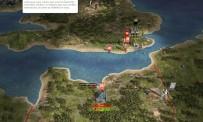 First of all, you should know that Total War games are divided into two very distinct phases: turn-based game phases and others, in real time. Although it is the second which makes the originality of the title, the first is absolutely not anecdotal. Well, let's be honest, it's really very close to Civilization. It would indeed be like Sid Meier's hit without his ambition (to bring a people from the cave age to the modern age, it's still heavy) and above all, without his technological tree. Concretely, everything is a little lighter. The principle, however, remains the same. It's up to you to conquer the continent after having conquered as many cities as possible, having improved them, raising armies... Cities and castles have completely different modes of operation. Let's say that the former concern civilians and the latter the military. Of course, everything quickly becomes interdependent. Cities bring money that will allow you to raise much larger armies or create buildings. Cities also allow you to raise troops, but these are made up of peasants and therefore much less effective than those produced in fortresses. What you do with your money won't just have consequences in your realm. Benedict XVI of the time observes you from his small Roman district, the Vatican. If in your constructions you neglect the clergy too much, they will be angry. And you have to put things in their context; At the time, we did not laugh with religion. This does not mean that entering a church today is like entering an Ibiza evening, but since Cauchon, the church has achieved a certain flexibility. For example, she will not send you her army if you have not built buildings to the glory of God, as is the case in the game. Unlike the previous games, religion is not just a succession of constraints. If a pope passes away, you can now influence the re-election of a new one to benefit from a little more flexibility in the following years. It is remarkable to note that everything is held together magnificently between the management of the city, the political reports and a few external players such as the assassins who allow you to kill a local lord neither seen nor known.
First of all, you should know that Total War games are divided into two very distinct phases: turn-based game phases and others, in real time. Although it is the second which makes the originality of the title, the first is absolutely not anecdotal. Well, let's be honest, it's really very close to Civilization. It would indeed be like Sid Meier's hit without his ambition (to bring a people from the cave age to the modern age, it's still heavy) and above all, without his technological tree. Concretely, everything is a little lighter. The principle, however, remains the same. It's up to you to conquer the continent after having conquered as many cities as possible, having improved them, raising armies... Cities and castles have completely different modes of operation. Let's say that the former concern civilians and the latter the military. Of course, everything quickly becomes interdependent. Cities bring money that will allow you to raise much larger armies or create buildings. Cities also allow you to raise troops, but these are made up of peasants and therefore much less effective than those produced in fortresses. What you do with your money won't just have consequences in your realm. Benedict XVI of the time observes you from his small Roman district, the Vatican. If in your constructions you neglect the clergy too much, they will be angry. And you have to put things in their context; At the time, we did not laugh with religion. This does not mean that entering a church today is like entering an Ibiza evening, but since Cauchon, the church has achieved a certain flexibility. For example, she will not send you her army if you have not built buildings to the glory of God, as is the case in the game. Unlike the previous games, religion is not just a succession of constraints. If a pope passes away, you can now influence the re-election of a new one to benefit from a little more flexibility in the following years. It is remarkable to note that everything is held together magnificently between the management of the city, the political reports and a few external players such as the assassins who allow you to kill a local lord neither seen nor known.
Order and conquer!
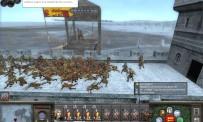 The second phase of the game is what makes Medieval II: Total War special, namely the monstrous 3D battles between thousands of soldiers. Over time (the game is spread over a period that goes from the year 1000 to around 1600), you will have more effective troops. The game contains about twenty nations. It's nice to see that each of them is truly unique. In each camp, there are specific units. You can produce units of different nature: archers, spearmen, swordsmen, artillery, cavalry. As always, it is the heterogeneity of the troops that makes it possible to achieve victory. And the excess, of course, but it is not impossible to win a victory with fewer men as long as you apply certain rules to the letter without panicking too much. Either way, chances are your troops will panic before you do. After a certain number of deaths among a group of units, they feel much less comfortable in combat and begin to lose all motivation. When they have lost all hope of achieving a victory, they leave the battlefield. Basically, a fight always takes place in the same way: the archers send volleys of arrows on the first enemy ranks and the artillery does the same. In order not to suffer the same damage, the cavalry must bypass the enemy troops and take their artillery from the rear. The campaign being dynamic (troops that are not completely eliminated leave the field to take refuge in an enemy fortress), the cavalry will have to do their best to charge the fleeing ones. If the first part of the fight goes well, there's really no reason for the melee clash to go wrong. These fights are meant to be highly realistic. For example, archery should stop firing when close combat begins. The Friendly Fire rule applies, regardless of the difficulty mode (which is by the way really very simple at the lowest level, so as not to put off players who discover this series). If most of the fights are similar when they take place in the open countryside, it is not the same in the sieges of fortresses where everything becomes truly exciting. In addition to the tactical reflexes learned in traditional games, you have to think about breaking walls, invading enemy territory without too much damage to have the upper hand. After a successful conquest, you have several options: loot the town, execute everyone, or play it pretty cool, knowing that you'll have opponents, at least initially.
The second phase of the game is what makes Medieval II: Total War special, namely the monstrous 3D battles between thousands of soldiers. Over time (the game is spread over a period that goes from the year 1000 to around 1600), you will have more effective troops. The game contains about twenty nations. It's nice to see that each of them is truly unique. In each camp, there are specific units. You can produce units of different nature: archers, spearmen, swordsmen, artillery, cavalry. As always, it is the heterogeneity of the troops that makes it possible to achieve victory. And the excess, of course, but it is not impossible to win a victory with fewer men as long as you apply certain rules to the letter without panicking too much. Either way, chances are your troops will panic before you do. After a certain number of deaths among a group of units, they feel much less comfortable in combat and begin to lose all motivation. When they have lost all hope of achieving a victory, they leave the battlefield. Basically, a fight always takes place in the same way: the archers send volleys of arrows on the first enemy ranks and the artillery does the same. In order not to suffer the same damage, the cavalry must bypass the enemy troops and take their artillery from the rear. The campaign being dynamic (troops that are not completely eliminated leave the field to take refuge in an enemy fortress), the cavalry will have to do their best to charge the fleeing ones. If the first part of the fight goes well, there's really no reason for the melee clash to go wrong. These fights are meant to be highly realistic. For example, archery should stop firing when close combat begins. The Friendly Fire rule applies, regardless of the difficulty mode (which is by the way really very simple at the lowest level, so as not to put off players who discover this series). If most of the fights are similar when they take place in the open countryside, it is not the same in the sieges of fortresses where everything becomes truly exciting. In addition to the tactical reflexes learned in traditional games, you have to think about breaking walls, invading enemy territory without too much damage to have the upper hand. After a successful conquest, you have several options: loot the town, execute everyone, or play it pretty cool, knowing that you'll have opponents, at least initially.
Engine, action!
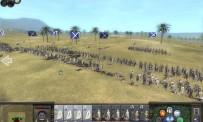 If the playing field map is pretty enough, it's nothing compared to the battles. With a far enough zoom, we can distinguish these large armies. We just regret that the sets are a bit empty. But getting a little closer, it's just beautiful. The mesh ribs glint in the sun, dazzling the screen with HDR technology it seems. In general, when we say HDR, you tend to be wary. Ouhla: it's going to row. Well think again, it's pretty cool with an average configuration. In the worst case, simply turning off the shadows will save a few frames per second. The lighting effects are also very successful. You have to see the flaming balls sent by trebuchets cutting the sky in two to appreciate the spectacle. The very high class, at all levels.
If the playing field map is pretty enough, it's nothing compared to the battles. With a far enough zoom, we can distinguish these large armies. We just regret that the sets are a bit empty. But getting a little closer, it's just beautiful. The mesh ribs glint in the sun, dazzling the screen with HDR technology it seems. In general, when we say HDR, you tend to be wary. Ouhla: it's going to row. Well think again, it's pretty cool with an average configuration. In the worst case, simply turning off the shadows will save a few frames per second. The lighting effects are also very successful. You have to see the flaming balls sent by trebuchets cutting the sky in two to appreciate the spectacle. The very high class, at all levels.
